At the beginning of 2024, Geely Galaxy showcased a concept car named “Galaxy Starship” at the Beijing Auto Show.
At that time, Geely Galaxy stated that the “Galaxy Starship” incorporated several advanced technologies from the company, including the new generation Thor hybrid system, 11-in-1 efficient silicon carbide electric drive, Shield short blade battery, GEA new energy architecture, and FlymeAuto.
Therefore, many believed this would be the flagship model of the Galaxy brand.
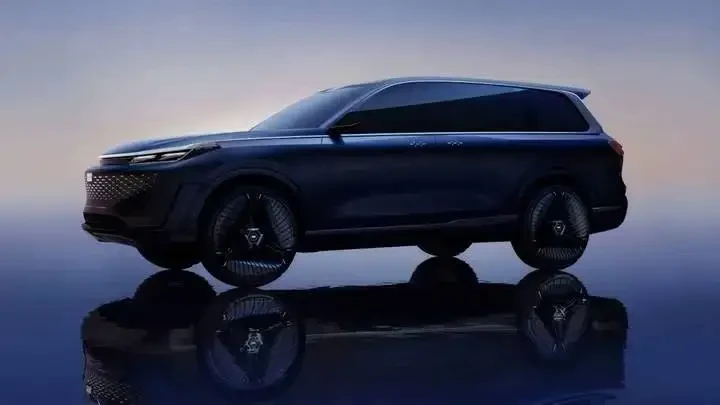
Thus, the starting price of the Geely Galaxy Starship 7 at $13,700 is particularly eye-catching.
- 55km Launch Edition: approximately $13,700
- 55km Exploration Edition: approximately $15,000
- 120km Launch+ Edition: approximately $15,400
- 120km Exploration+ Edition: approximately $16,800
- 120km Navigation Edition: approximately $18,200
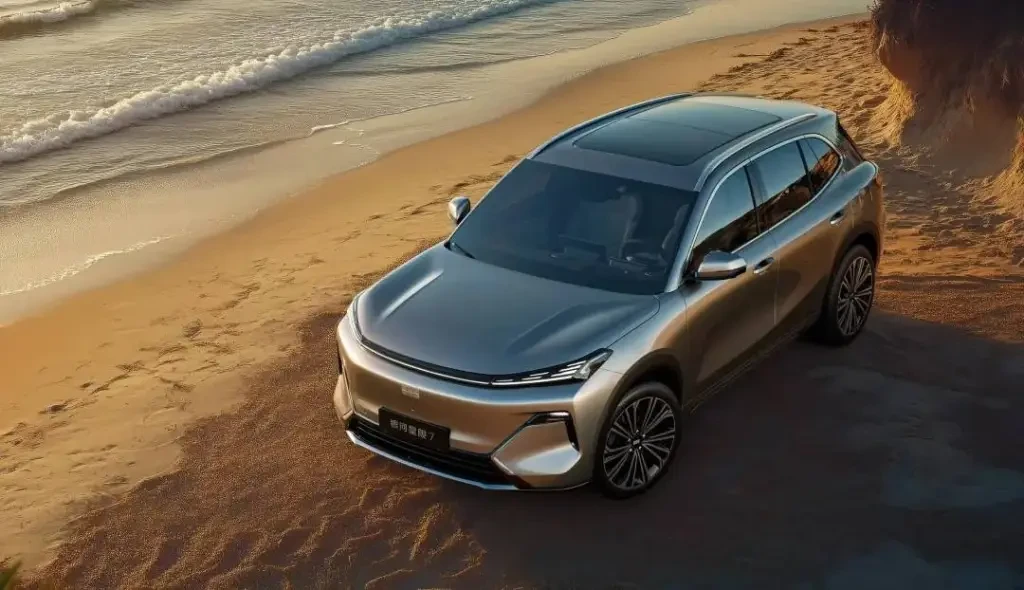
The Geely Galaxy Starship 7 is the production version of the “Galaxy Starship” concept car. As Geely Galaxy mentioned at the Beijing Auto Show, it is based on the latest GEA architecture and incorporates a series of advanced technologies from Geely, but its target market is the fourteen-thousand-dollar family SUV segment.
After selling over a million units, the BYD Song PLUS finally meets its competitor.
Starship 7 EM-i, Practicality First
From the exterior, Geely Galaxy faithfully reproduces the design of the concept car. The dual-layer structure allows the Galaxy ripple-through lights to have more expressive forms, and the sunrise taillights are evenly bright.
The better news is that Geely has removed the matrix LED front face found on models like the Galaxy L7, enhancing the appearance while reducing costs.
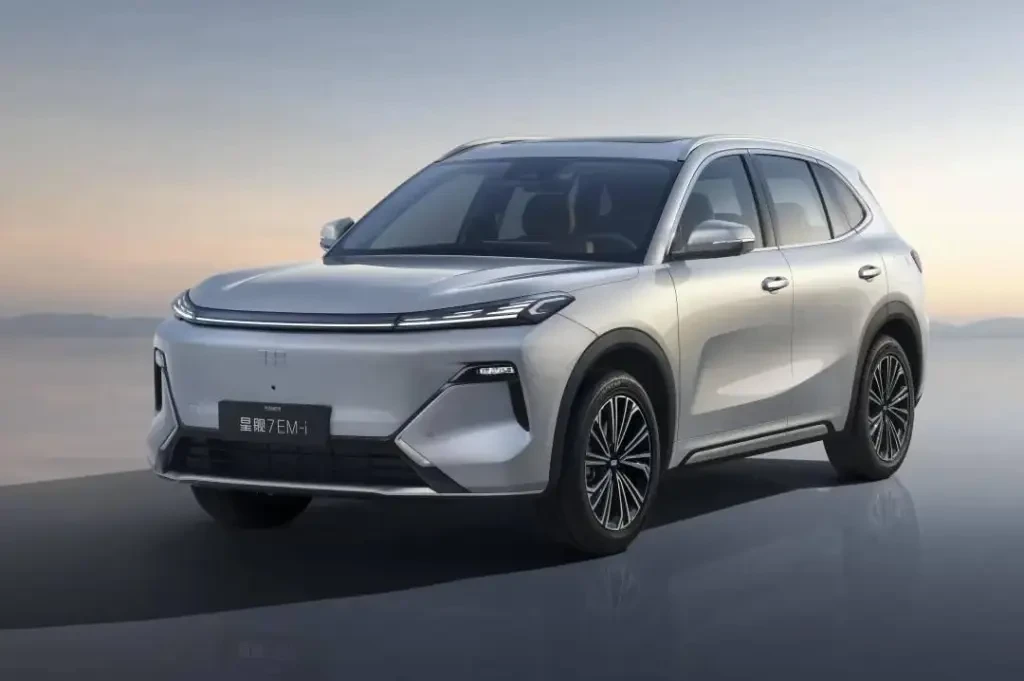
In the highly competitive entry-level SUV market, reducing costs while meeting the growing expectations of consumers is a significant challenge. Facing this dilemma, Geely Galaxy fundamentally changed its approach, emphasizing “form follows function,” meaning that form should follow function, and function should serve the user experience.
At the front bottom, Geely Galaxy insists on using a small-sized grille and, through over 20 aerodynamic optimizations throughout the vehicle, successfully reduced the drag coefficient of the Starship 7 to nearly that of a pure electric SUV at 0.288Cd. More impressively, Geely managed to lower the drag while ensuring headroom for the rear seats, avoiding the blind adoption of a fastback design.
For a family SUV, practicality is paramount.
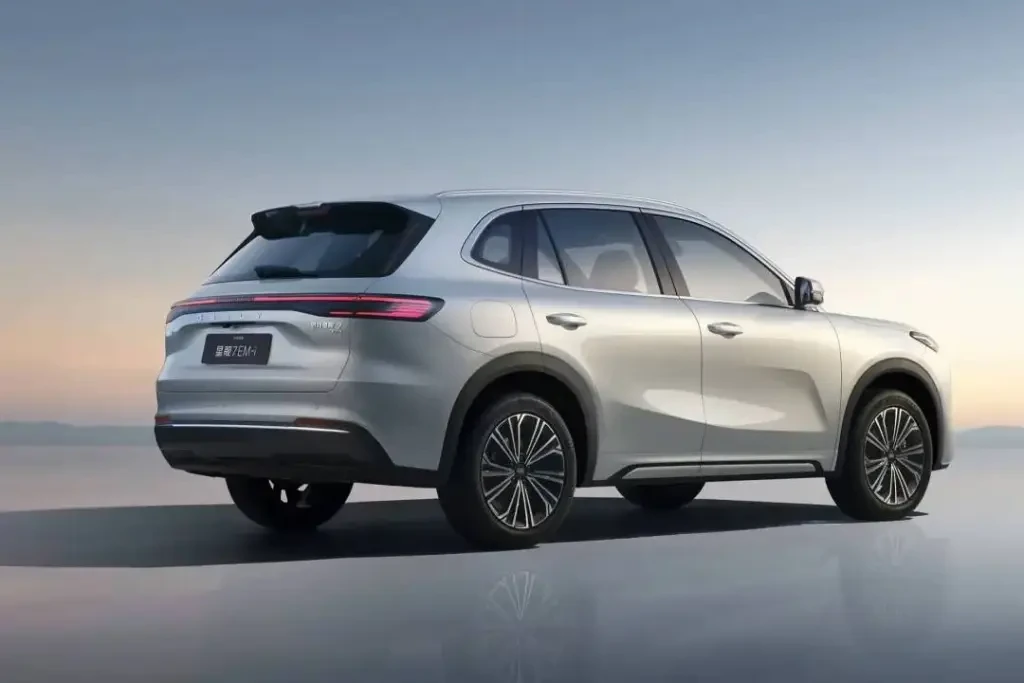
The “form follows function” design philosophy is also reflected in the door handles. The Starship 7 does not use hidden door handles but instead provides a conventional door handle based on user needs. Opening the door, you’ll find the interior of the Starship 7 follows the same principle.
Nowadays, with user feedback, the return of physical buttons is becoming a trend. People have found that no matter how well touch screen interactions are designed, the driver’s attention will still be diverted, and at high speeds, there is no room for error in human-vehicle interaction.
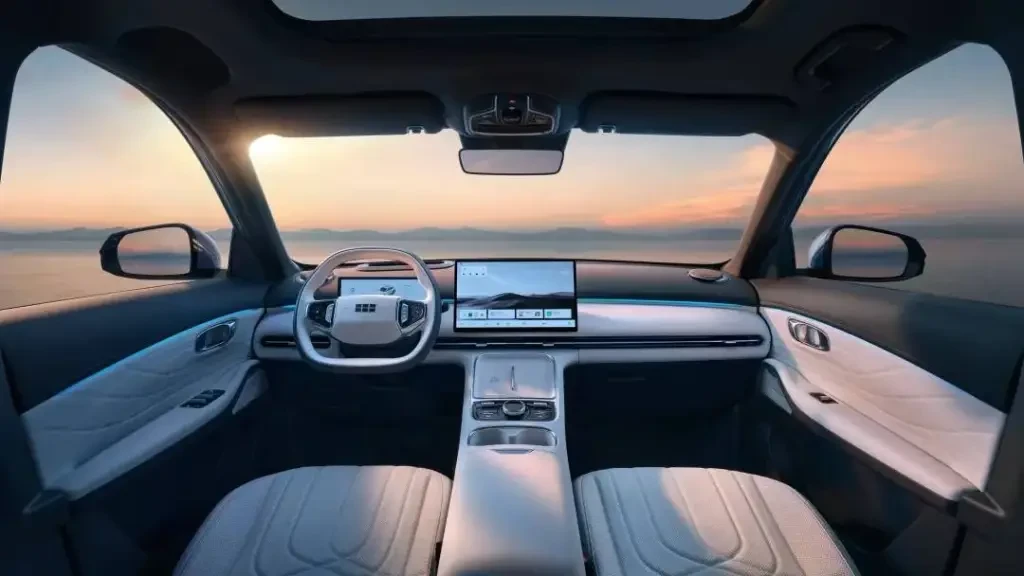
Geely Galaxy has recognized this issue, and with the Starship 7, they have moved frequently used controls from the screen to physical buttons, paddles, and knobs within easy reach of the user.
Compared to the knob on the Geely Galaxy E5, the Starship 7 goes a step further. It not only adjusts multimedia volume but also, with a press, can play preset external vehicle voice messages to ask pedestrians to give way.
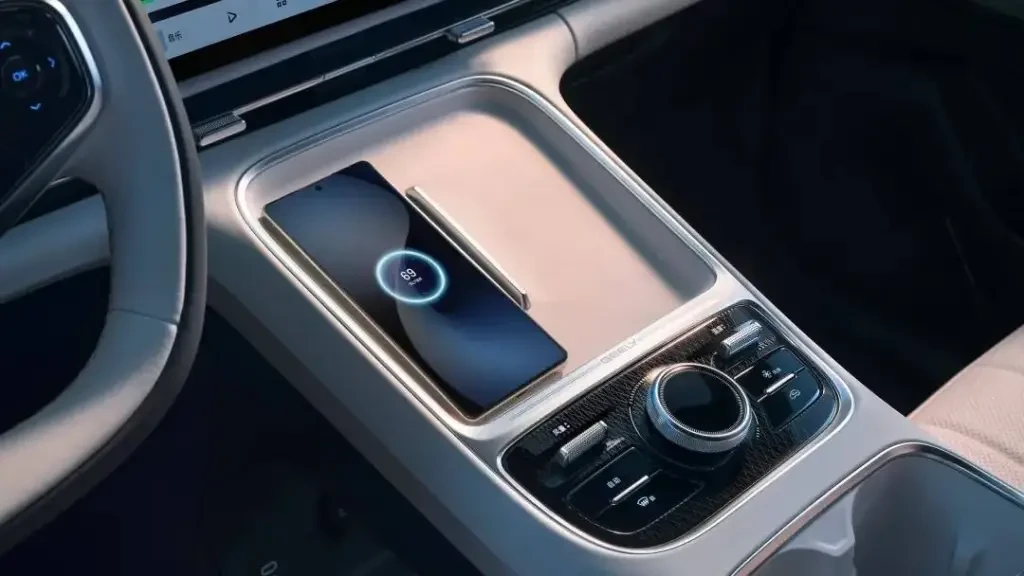
In terms of comfort features, the Starship 7 doesn’t offer many flashy functions. Geely has chosen to make necessary features practical rather than having many but impractical features.
It includes 50W wireless phone charging with air cooling, front seat massage with 16 points for the hips and back, 16 speakers with 1000W power, and ten-channel surround sound, comparable to higher-priced Lynk models. The car system is the top-tier Flyme Auto, supporting seamless connectivity and voice control via WeChat, and it even includes the rare Sentinel mode for its price range.
In the rear, Geely Galaxy focuses on space. A 2755mm wheelbase ensures longitudinal space, with rear vertical space reaching 1.2 meters. There’s also a large 628L trunk (including the sunken space at the bottom), and with the second-row seats folded down, it creates a 1856mm long depth, offering 2065L of storage space.
Although the rear doesn’t have many comfort features, for a family SUV, being “big” is enough.
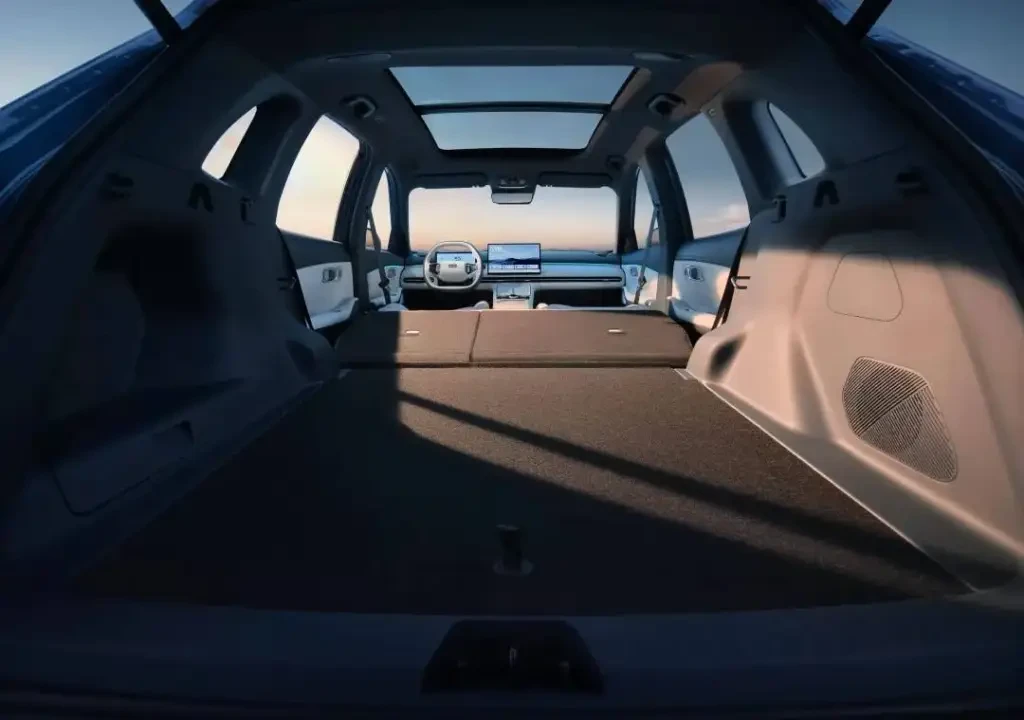
Fuel Efficiency is Key
In reality, Geely Galaxy has struggled to launch a plug-in hybrid model that can capture a large market share. The Galaxy L7 started strong but sales have hovered around 6,000 units per month, and the plug-in hybrid sedan L6 has similar results.
This time, Geely Galaxy has shifted its focus to fuel efficiency.
In November 2024, Geely Auto Group officially launched its latest hybrid innovation—the Thor EM-i Super Hybrid. Geely claims this system boasts a world-leading thermal efficiency of 46.5%.
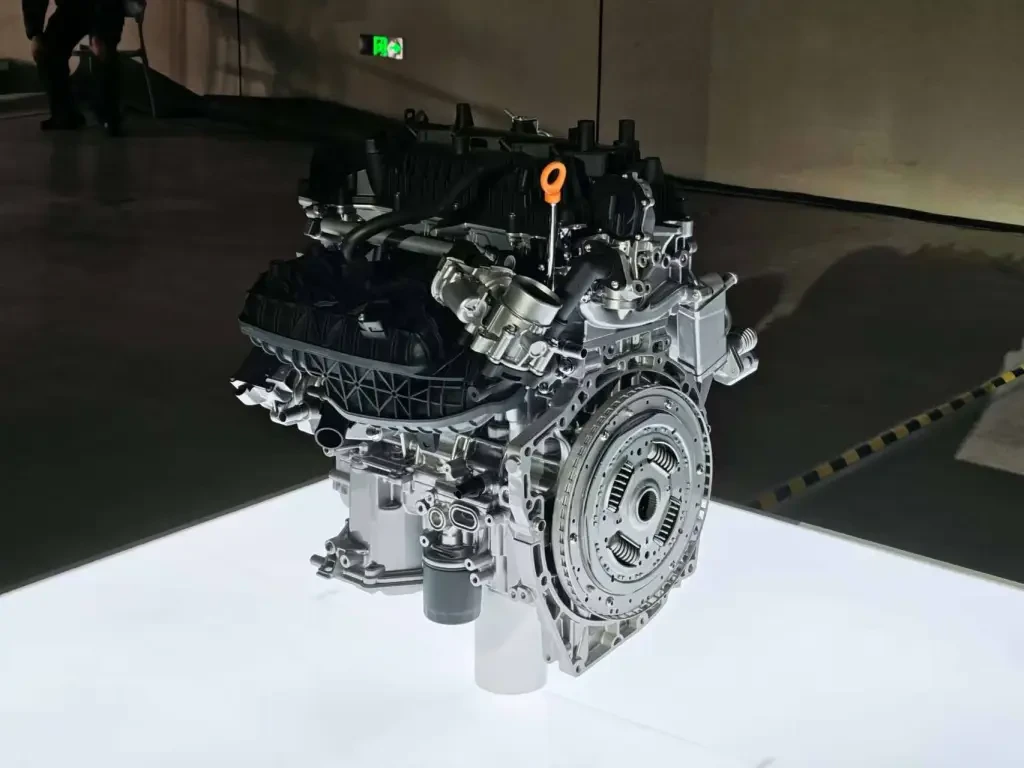
Moreover, the Starship 7’s 11-in-1 electric drive includes an SiC boost module, paired with the world’s first dual-end X-Pin flat wire motor and a dedicated Shield hybrid short-blade battery. The PCM power conversion efficiency reaches 99%, and the consistency of full-charge and discharge has improved.
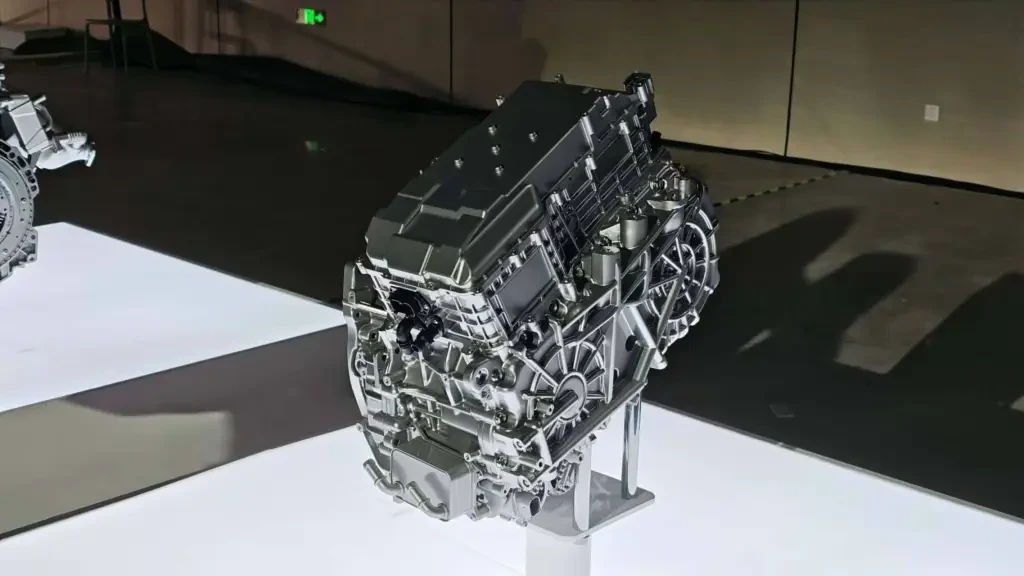
Additionally, to address the stalling issue of single-speed DHT in certain scenarios, the Thor EM-i emphasizes redundancy safety and AI hybrid concepts. Redundancy safety means the engine, P1 motor, and P3 motor back each other up to ensure the power system drives normally, preventing stalling.
On the software side, Geely has integrated intelligent applications into this system to pursue more precise energy consumption management. For example, it can pre-identify road conditions, driving areas, altitude, and slope scenarios to predict the vehicle’s power needs. As the vehicle approaches its destination, it automatically reduces air conditioning power.
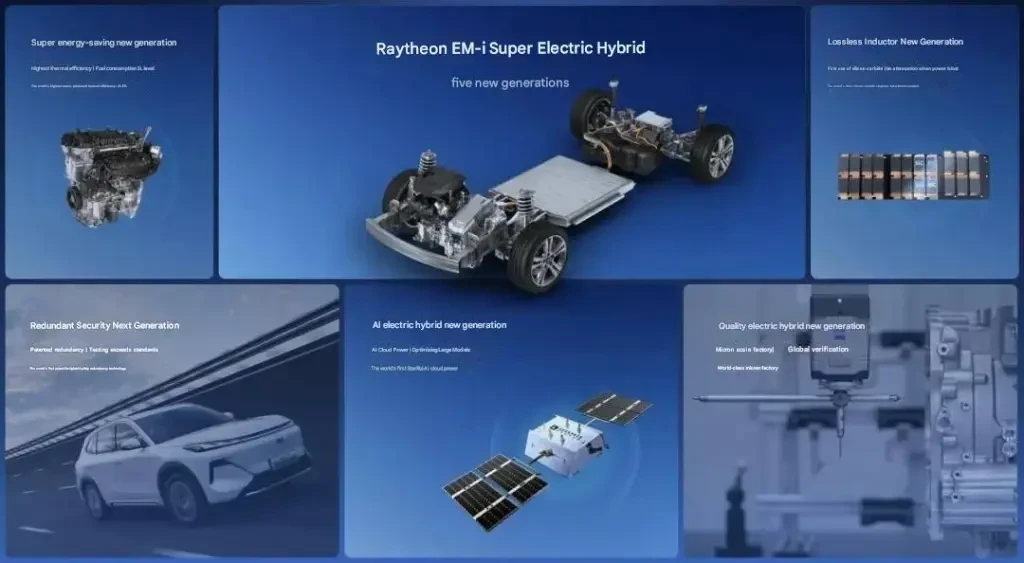
Geely states that the Thor EM-i focuses on improving the fuel economy of hybrid models. According to Geely’s official test data, the Geely Galaxy Starship 7 equipped with the Thor EM-i Super Hybrid achieves a combined range of 1400km, with a CLTC condition fuel consumption of just 3.75L per 100km.
In real tests by us, the Starship 7 with the EM-i Super Hybrid recorded a highway fuel consumption of only 2.4L/100km, and on national and city roads, its displayed fuel consumption was just 3.6L/100km. It should be noted that the Starship 7 sacrifices some power to save fuel.
Unlike the Thor Electric Hybrid 8848 previously used by Geely Galaxy, the Thor EM-i abandons the 3-speed DHT transmission in favor of a P1+P3+single-speed DHT combination. The original 1.5T engine has also been changed to a 1.5L, with the maximum power reduced from 120kW to 82kW.
Fortunately, to compensate for this, Geely increased the maximum power of the P3 motor from 107kW to 160kW, achieving a 0 to 100 km/h acceleration in 7.5 seconds—just slightly faster than the benchmark Song Plus DM-i.
Old Geely, New Geely
“Build cars that ordinary people can afford.”
This was the brand mission Geely set for itself, but many people don’t know that when Li Shufu first started making cars, he aimed at the luxury car market. He had his workers disassemble his Mercedes-Benz to study every component, eventually creating a replica called the “Geely No. 1.”
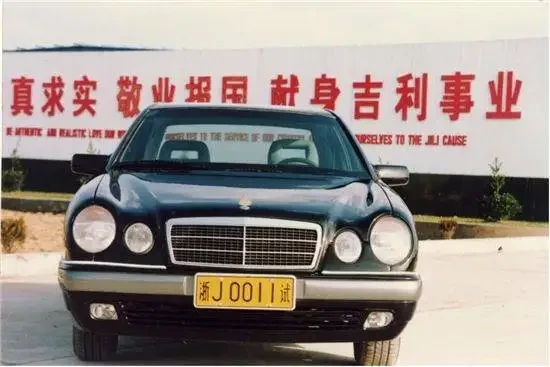
Of course, this car couldn’t be sold. At that time, Geely not only lacked the qualifications to manufacture cars, but selling the roughly made “Geely No. 1” was also unrealistic.
The failure of “Geely No. 1” made Li Shufu realize that making cars is not easy, and making luxury cars is even harder. Even if he succeeded, how many ordinary Chinese people could afford them at that time? Soon, he shifted his focus to another group— Entrepreneurs striving to join the ranks of the affluent, who needed an affordable and practical small car.
At that time, car prices were generally high, with even the cheapest models like Xiali and Alto costing over 100,000 RMB. In Li Shufu’s view, this was his opportunity.

On August 8, 1998, the first Geely Haoqing car rolled off the production line in Taizhou. Like the “Geely No. 1,” the Geely Haoqing was also crafted by sheet metal workers hammering it out. Ultimately, Li Shufu “hammered” out 100 Geely Haoqing cars for about 4 million RMB. However, the result was a shock: the cars failed the rain test, indicating sealing issues and substandard quality.
Faced with this outcome, Li Shufu made a tough decision—he brought in a road roller and crushed all 100 Haoqing cars. “What was crushed was about 4 million RMB worth of new cars, but it established Geely’s commitment to building high-quality cars.”
Geely Auto CEO Gan Jiayue stated at the launch event that Taizhou is where Geely Auto began, and the Starship 7, officially launched in Taizhou, perfectly interprets Geely Galaxy’s brand mission— To build smart, high-quality cars for everyone.
Geely no longer just pursues “affordability.” The new GEA architecture offers spacious interiors, ultra-low fuel consumption of 3.75L, and high-quality features like Flyme Sound, all of which give the Starship 7 the confidence to be a “premium car for the masses.”
Source from ifanr
Disclaimer: The information set forth above is provided by ifanr.com, independently of Chovm.com. Chovm.com makes no representation and warranties as to the quality and reliability of the seller and products. Chovm.com expressly disclaims any liability for breaches pertaining to the copyright of content.




